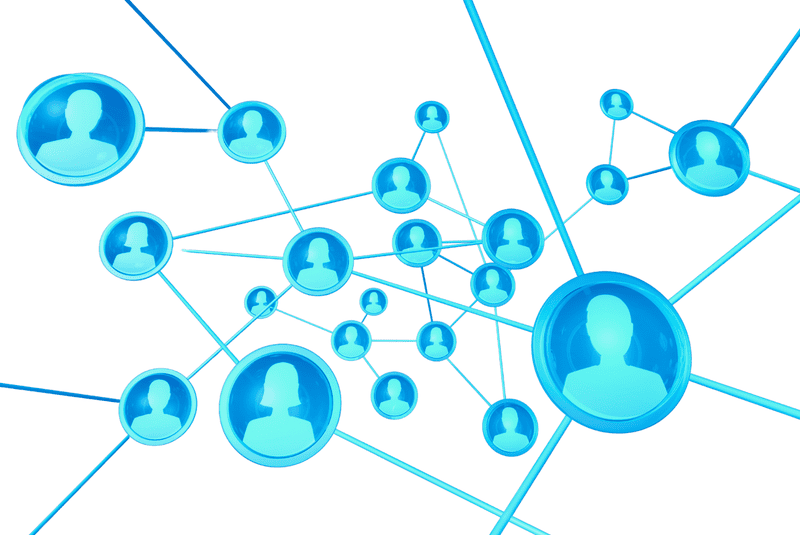The Network Effect in Employee Experience: How Relationships Predict Outcomes

Despite AI fundamentally reshaping jobs and entire industries, I often wonder why employee listening hasn’t evolved to reflect this shift. Plenty of vendors have tried to replace employee surveys with passive data or signals pulled from productivity tools, but these approaches often struggle to progress beyond the initial legal and privacy reviews. Even when they do, the technical lift can be heavy, and the moment employees hear about monitoring tools, many start to change how they communicate. These approaches feel more like surveillance and spyware than honest attempts at insight.
Are traditional employee surveys, designed for a workplace that no longer exists and interpreted as if work still happens according to tidy boxes on an org chart, really the best we can do today?
Influence Matters More Than Keyword Counts

I think a place to start is acknowledging that not all feedback has equal influence. Every voice matters, of course, but there are important and nuanced dynamics shaping employee experience that traditional listening platforms fail to capture.
For example, many attempt to make sense of unstructured employee feedback by counting how often certain words or topics appear and then gauging whether people talk about them in a positive, neutral, or negative way. It is simple, familiar, and easy to explain. The challenge is that this elementary approach often leads to misleading interpretations.
If we analyze keywords and topics without considering who actually expressed them, we lose critical context. A highly connected employee has a much stronger effect on how others think and feel compared to someone who sits on the outer edges of the organization’s network. Some voices ripple through the organization like wildfire, while others remain relatively isolated. When we ignore these patterns, we ignore the signals that enable us to address emerging issues before they grow into costly behavioral outcomes.
The Social Nature of Attitudes, Perceptions, and Intentions
Researchers have studied these “contagion effects” for years. Think about the talented colleague who everyone loves working with. When they leave the organization, not only does it negatively impact morale, but others naturally begin to wonder if they too should consider their next move outside the organization. In many cases, one key departure ultimately leads to others leaving the organization as well.

The global COVID pandemic gave us a clear and memorable lesson in how quickly something can spread through a connected system. We all became amateur epidemiologists overnight, learning about transmission paths, clusters, superspreaders, and how some people (even unknowingly) influence the trajectory of an outbreak. Although sentiment and behavior are not viruses, the patterns are surprisingly similar. In organizations, attitudes move through the same kinds of relational pathways that shape the spread of infectious diseases. A single highly connected person can accelerate the spread of burnout or disengagement in the same way a superspreader event can accelerate the spread of illness. Smaller, isolated groups may remain insulated for a while, while tightly knit communities adopt shared perceptions at remarkable speed.
When we can identify where key influencers are disengaged or likely to leave, we can also predict where their sentiments are most likely to spread. Because this insight reflects people who are still active, a key benefit over a lagging turnover rate that only reflects people who have already left, leaders can take proactive action. They can engage the informal communities around these employees and mitigate the risk of network contagion before it turns into costly and preventable attrition.
The Research Behind These Dynamics

For decades, research has confirmed what many leaders already sense. Attitudes, emotions, and decisions rarely stay contained within individuals. They travel through relationships. Whether it is enthusiasm, burnout, or turnover, these patterns flow through informal networks in ways that make sense once we study the social fabric of an organization.
Below is a brief overview of some studies that have shaped my understanding of contagion in the workplace, and why these insights matter as we rethink how to listen to employees in today’s increasingly networked world.
Turnover Spreads Through Social Ties
Felps and colleagues (2009) found that employees are strongly influenced by the job search behaviors and stay intentions of their coworkers. People who are deeply embedded in their teams, with strong relationships and a strong sense of fit, are less likely to mimic a peer’s departure. Those with weaker ties are more likely to follow. This research reframed turnover from a personal decision to a network-driven process.
Satisfaction and Intentions Spread Too
Wang (2017) expanded this perspective by showing that job satisfaction and turnover intentions also flow through social networks over time. Employees adjust their views based on the beliefs and behaviors of the people they interact with most often. This means perceptions and intentions move along the same pathways that carry information and collaboration. If we only capture individual sentiment, we miss the broader social dynamics that shape it.
The Science of Emotional Contagion
Barsade’s work (2002; 2018) brought another layer of insight. She showed that emotions are contagious. A single person’s mood can raise or lower a group’s cooperation and performance, often without anyone realizing what is happening. This indicates that team climate is not just a collection of individual emotions; it is a property of the network itself.
Why Some Employees Influence the System More Than Others
Research by Wiesche et al. (2024) and Villafranca (2016) highlights that contagion effects are not evenly distributed. Employees who occupy central or highly connected positions in an organization exert a disproportionate influence on how sentiment and behavior spread. When someone in that central position becomes disengaged or leaves, the cascading effect is larger and faster. This has nothing to do with hierarchy. Influence follows relationships.
What This Means for Listening and People Analytics
All of this research points to a simple insight: how people feel, and what they choose to do with those feelings, is shaped by who they are connected to.
Traditional employee surveys were designed for a time when work was built around stable teams and predictable reporting lines. Today’s reality looks nothing like that. Work happens in fluid networks that cross jobs, functions, time zones, and projects.
To truly understand employee experience today, we need to understand:
- Who people interact with
- Where sentiment clusters
- Which voices carry the most influence
- How perceptions spread through communities
Traditional surveys are still important, but they must be enhanced with an understanding of the relational context that shapes experience.
Why Network-Based Listening Is the Future
As organizations become more distributed and collaborative, the research becomes impossible to ignore. Employee experience is fundamentally a network phenomenon. If we want to predict attrition, understand engagement, or drive meaningful organizational change at scale, we need listening methods that reflect this reality.
This is not just about new technology. It is about following the science. To understand people, we have to understand their connections and relationships.
If our people work in networks, why are we still listening to them as if they do not? And what might we learn and do differently if we started listening in a way that reflects how modern organizations function?
References:
Barsade, S. G. (2002). The ripple effect: Emotional contagion and its influence on group behavior. Administrative Science Quarterly, 47(4), 644–675. https://doi.org/10.2307/3094912
Barsade, S. G., Coutifaris, C. G. V., & Pillemer, J. (2018). Emotional contagion in organizational life. Research in Organizational Behavior, 38, 137–151. https://doi.org/10.1016/j.riob.2018.11.005
Bonnesen, L., Glasø, L., & Einarsen, S. V. (2022). The contagious leader: A panel study on occupational stress among Danish managers and employees. Leadership & Organization Development Journal, 43(8), 1229–1244. https://doi.org/10.1108/LODJ-12-2021-0544
Felps, W., Mitchell, T. R., Hekman, D. R., Lee, T. W., Holtom, B. C., & Harman, W. S. (2009). Turnover contagion: How coworkers’ job embeddedness and job search behaviors influence quitting. Academy of Management Journal, 52(3), 545–561. https://doi.org/10.5465/amj.2009.41331075
Porter, C. M., Outlaw, R., Gale, J., & Cho, T. S. (2020). The turnover contagion process: An integrative review of theoretical and empirical research. Journal of Organizational Behavior, 41(8), 793–812. https://doi.org/10.1002/job.2465
Usanova, K. (2024). Talent turnover and the contagion effect. Human Resource Development International, 27(1), 3–23. https://doi.org/10.1080/13678868.2023.2254286
Villafranca, E. S. (2016). Exploring network factors influencing turnover over time (Doctoral dissertation). University of Nebraska–Lincoln. Available from ProQuest Dissertations & Theses Global. (Accession No. 10143916)
Wang, W. (2017). Social network contagion in the job satisfaction–intention–turnover model. Social Behavior and Personality, 45(7), 1135–1150. https://doi.org/10.2224/sbp.6045
Wiesche, M., Guzman, I., & Basile, K. A. (2024). The impact of social comparison on turnover among IT professionals. Computers in Human Behavior, 149, 107924. https://doi.org/10.1016/j.chb.2023.107924